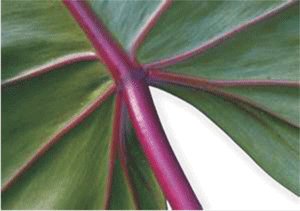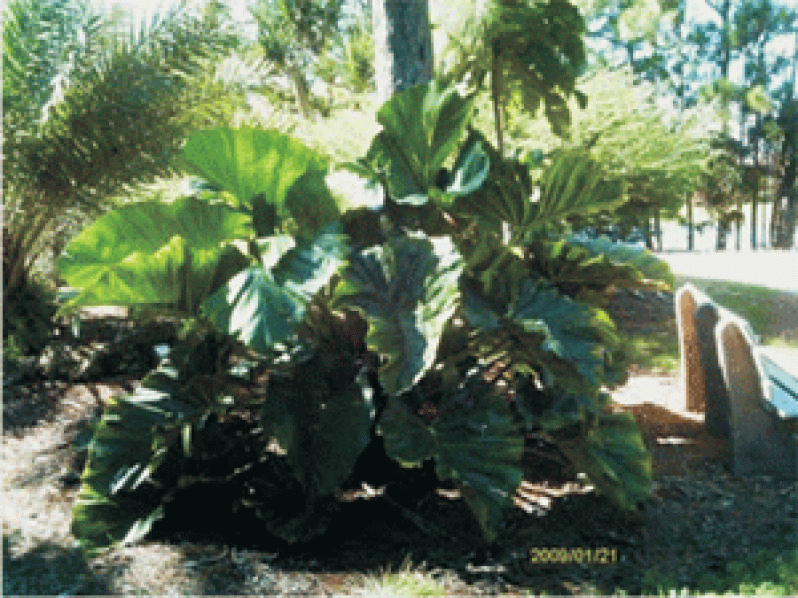WHAT scientists call the Hymenaea courbaril tree Guyanese have been renamed the ‘Stinking Toe’ tree. This West Indian Locust tree produces a fruit with a bad smell but a delicious taste.  For those not in the know, the term ‘stinking toe’ refers to the large seedpod of the West Indian Locust tree, which is shaped like a very large tamarind without the jointed look. It has a very hard shell, and looks like a big fat toe, whilst its flesh is very dry and powdery.
For those not in the know, the term ‘stinking toe’ refers to the large seedpod of the West Indian Locust tree, which is shaped like a very large tamarind without the jointed look. It has a very hard shell, and looks like a big fat toe, whilst its flesh is very dry and powdery.
Growing up as child, I remember craving the delicious ‘Stinking Toe’ fruit. Despite its smell, one was just not enough; it had to be two three, four, or more. I found out, too, that the smell, after I had gorged myself on the fruit, was very pervasive: It wasn’t very easy to procure a kiss if you had just eaten the ‘Stinking Toe’.
Common to the Caribbean, Central and South America, this tree is reputedly one of the largest trees in the Caribbean.
As a child growing up, I did not know of the immense medicinal and nutritional value of the West Indian Locust.
Quite a few of the older Guyanese can tell you that, when boiled in water, the shell makes a drink or tea that is very good for alleviating high blood sugar.
The bark and other parts of the tree are good for treating back pain, and the tree-based herbs are said to aid in the treatment of a wide variety of health disorders, such as diarrhoea, dysentery, general fatigue, constipation, prostate problems, asthma, laryngitis and bronchitis.
 In Brazil, the tree is called the Jatoba tree, and is renowned for its medicinal and energy-giving properties. A reliable source quotes Dr. J. Monteiro Silva, an expert on Brazilian traditional medicine, as writing that drinking Jatobá tea can make a person feel strong and vigorous, and promote a good appetite.
In Brazil, the tree is called the Jatoba tree, and is renowned for its medicinal and energy-giving properties. A reliable source quotes Dr. J. Monteiro Silva, an expert on Brazilian traditional medicine, as writing that drinking Jatobá tea can make a person feel strong and vigorous, and promote a good appetite.
It has been said that, in the 1930s, an extract of the bark, Vinho de Jatobá (Jatobá wine) was popular throughout Brazil as an energizer and fortifier.
Lumberjacks working in the Brazilian rainforest have long used Jatobá tea to give them added energy, vigour and vitality. Even today, they are seen carrying large jugs of homemade Jatobá tea with them as they head off to work.
Mr. Fitz Ogle of the local Evergreen Nature Study Club, former Curator of the Botanical Gardens, concurs with statements made about the West Indian Locust tree: “Yes, all these things about the tree and its fruits are accurate. It would be difficult to find an illness that cannot be alleviated by the ‘Stinking Toe’ in some form or another. This is just another example of the bounty of the natural resources that we have in Guyana that are being underutilized,” he said.
Ogle says there are a few of these trees in the Botanical Gardens. “Some West Indian Locust trees exist on the Linden/Soesdyke Highway, but being primarily a forest tree, it can be found mainly in the rainforests of Guyana,” Ogle added.
There are other uses for this massive tree. The West Indian Locust is also a hardwood used for furniture, flooring and decorative purposes.
Little and Wadsworth, in their book, “Common Trees of Puerto Rico and the Virgin Islands”, mention that the bark of old locust trees could be removed in long thick sheets. This attribute of the Locust tree has led to its being used by the indigenous peoples of the Amazon region to make large canoes capable of holding between twenty-five and thirty people. The sheets of bark are sewn together in the form of a canoe. The seams are then waterproofed with resin, and wooden crosspieces are fitted to provide strength and retain shape of the canoe.
But you, dear Reader, when last have you seen a ‘Stinking Toe’ tree in Guyana?
Even if you did, would you be able to recognize it as such?
Are these trees extinct?
One of our readers, Journalist Shirley Thomas remembers growing up in Mabaruma, Region One (Barima/Waini), where there was a large “Stinking Toe” tree near to the Chan-a-Sue estate. She wasn’t too keen on eating the ‘Stinking Toes’, but recalls a tea made from the shell of the fruit being recommended as an effective means of alleviating high blood sugar.
This writer has fond reminiscences about the “Stinking Toe” tree. By the way, does any reader know how I can get my hands on some ‘Stinking Toes’?



.jpg)










